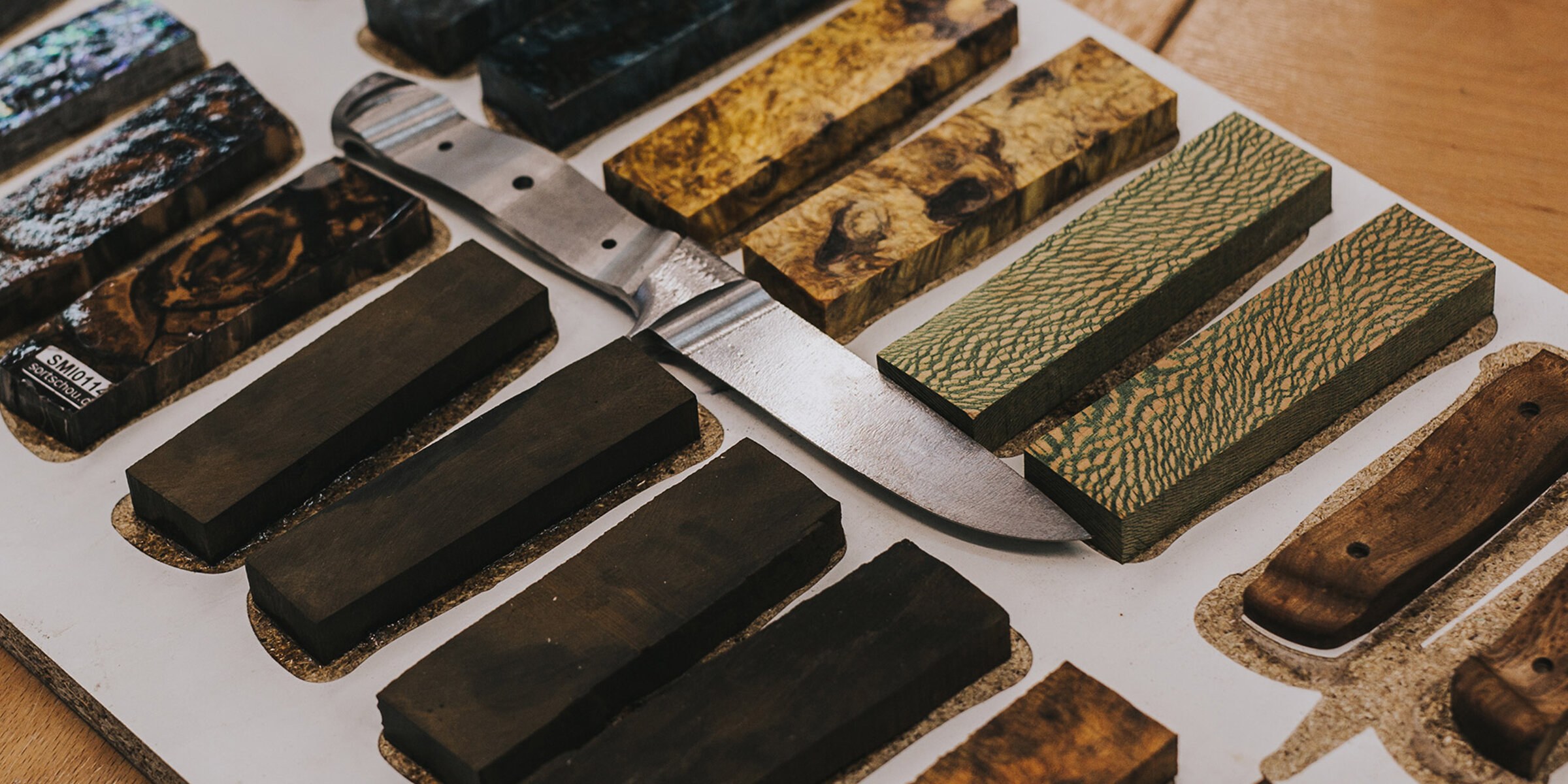
Handle Materials
The Choice is Yours
Wood
Not only the type of wood and its specific hardness determine the properties of a wood; they are also greatly influenced by fibre direction, moisture content at the time of processing, and the conditions under which the knife is used. Generally speaking, wood swells when it absorbs moisture and shrinks when drying, whereby absorbtion occurs at a faster rate than drying. Wood swells up to the fibre saturation point at approximately 28% wood moisture, but absorbs no more after that. The volume change of dry vs. wet wood is expressed in its shrinkage value and differs depending on direction (1:10:20 in longitudinal / radial / tangential direction). That means that tensions can build up in a wood if it is subjected to great changes in moisture, dried too quickly, or cut in the wrong direction, causing it to crack, distort, or loosen on the tang.
For the care of wooden handles, I recommend hardening oils such as linseed oil or natural floor oils. Apply thinly, allow to soak in for a few minutes, and then rub off any excess with a cloth.
Horn and Antler
The antlers of deer, moose, and reindeer enjoy great popularity as knife handles. As with wood, care must be taken that the material is processed when dry and not exposed to great changes in moisture. It is advisable to choose a section mostly free from marrow, as the porous core of the antler is easily soiled, difficult to clean, and takes longer to dry.
Chamois, ibex, buffalo, and sheep horn are beautiful and lightweight materials that can be polished to a high gloss. They are sensitive to moisture and heat, which can lead to a noticable edge between blade and handle, but this can be avoided by choosing the right piece and ensuring proper storage. Even in case warping does occur, it can usually be fixed by grinding off excess material after the knife is completed. In many cases, the material has then reached its final shape and changes no further.
Other Materials
Many materials can be used for a handle: animal products such as mother of pearl, bone, mammoth ivory, and walrus tusk (of course with CITES permit); synthetics such as micarta (resin-pressed paper or fabric) and raffir; corncobs or banksia pods cast in clear resin ─ even opal or glass is not impossible. The knife maker's creativity is limited only by his knowledge of the materials, his skills, and not least his patience.